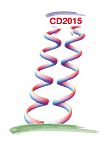Speaker
AlaaEldeen Elmeshenb
(Jagiellonian University, Krakow)
Description
The study of few-nucleon system is interesting and important. It gives a microscopic description of complex systems within the framework of modern concepts of nucleon-nucleon and many-body interactions. Using the muon capture process is an ideal tool to study few-nucleon systems. In this work we plan to investigate the µ− + d → ν_µ + n + n capture reaction. This reaction is interesting for several reasons. First of all, it offers a testing ground for the nuclear wave functions, which for any nucleon-nucleon (NN) forces can be constructed for such light systems with great accuracy. This reaction, is treated as the decay of the corresponding muonic atom, with the muon initially on the lowest K shell. The muon binding energy in this atom can be safely neglected and in the initial state we deal essentially with the deuteron and muon at rest. The general formalism for dealing with electroweak reactions on the deuteron will be presented. We will concentrate on the nuclear matrix elements of the corresponding weak current operator calculated in the momentum space within partial wave decomposition scheme. In the current operator apart from the relatively well known single nucleon contributions, the two-nucleon parts (generated by various meson exchange) play an important role. Their details are not well known and several models should be considered [1]. We will employ various models of NN and 3N forces, such as the Bonn B [2] or chiral NNLO potentials [3]. Additionally, we will be able to use for the first time the so-called ”improved” chiral nucleon-nucleon potentials from the Bochum-Bonn group [4] for the µ− + d → ν_µ + n + n capture reaction, we will show our predictions for all the available five orders of the chiral expansion and for all the five regulators at each order. The estimate of the total decay rates and differential capture rates as a function of the neutron momentum will be presented in a comparison with the experimental data. The decay rates will be investigated in the energy spectrum of the omitted neutrinos. Our results with the single nucleon currents look already very promising and we hope for the improvement in the description of the experimental data, when dominant two-nucleon current operators are included in our framework.
References
1. L. Marcucci et al., Phys. Rev. C83, 014002 (2011).
2. R. Machleidt, Adv. Nucl. Phys. 19 (1989) 189.
3. E. Epelbaum, Prog. Part. Nucl. Phys. 57, 654 (2006).
4. E. Epelbaum, H. Krebs, U.-G. Meißner, arXiv:1412.0142 [nucl-th] (2014).
Primary author
AlaaEldeen Elmeshenb
(Jagiellonian University, Krakow)

